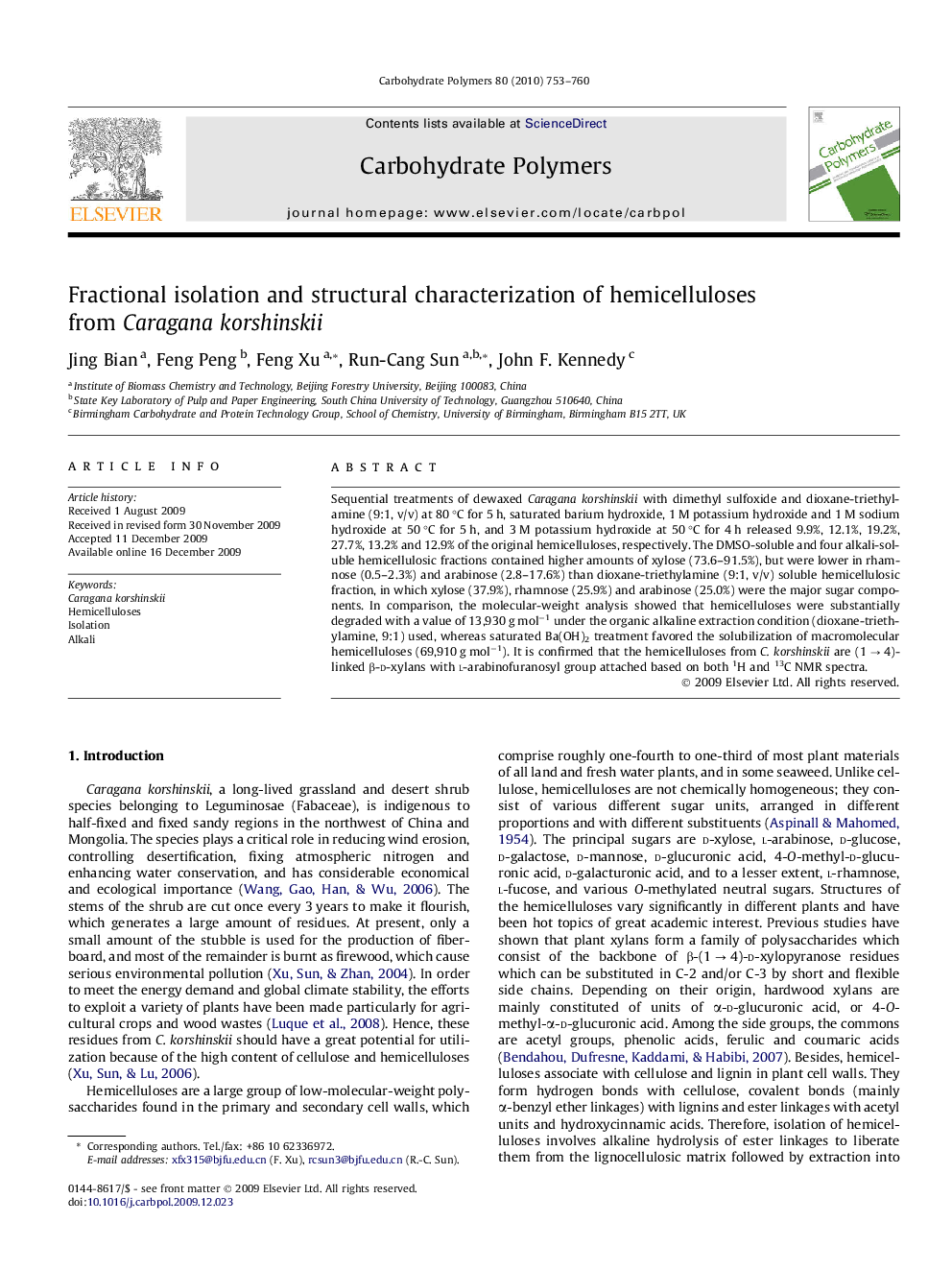| Article ID | Journal | Published Year | Pages | File Type |
|---|---|---|---|---|
| 1387230 | Carbohydrate Polymers | 2010 | 8 Pages |
Sequential treatments of dewaxed Caragana korshinskii with dimethyl sulfoxide and dioxane-triethylamine (9:1, v/v) at 80 °C for 5 h, saturated barium hydroxide, 1 M potassium hydroxide and 1 M sodium hydroxide at 50 °C for 5 h, and 3 M potassium hydroxide at 50 °C for 4 h released 9.9%, 12.1%, 19.2%, 27.7%, 13.2% and 12.9% of the original hemicelluloses, respectively. The DMSO-soluble and four alkali-soluble hemicellulosic fractions contained higher amounts of xylose (73.6–91.5%), but were lower in rhamnose (0.5–2.3%) and arabinose (2.8–17.6%) than dioxane-triethylamine (9:1, v/v) soluble hemicellulosic fraction, in which xylose (37.9%), rhamnose (25.9%) and arabinose (25.0%) were the major sugar components. In comparison, the molecular-weight analysis showed that hemicelluloses were substantially degraded with a value of 13,930 g mol−1 under the organic alkaline extraction condition (dioxane-triethylamine, 9:1) used, whereas saturated Ba(OH)2 treatment favored the solubilization of macromolecular hemicelluloses (69,910 g mol−1). It is confirmed that the hemicelluloses from C. korshinskii are (1 → 4)-linked β-d-xylans with l-arabinofuranosyl group attached based on both 1H and 13C NMR spectra.
